
PS-2020a / part16
.pdf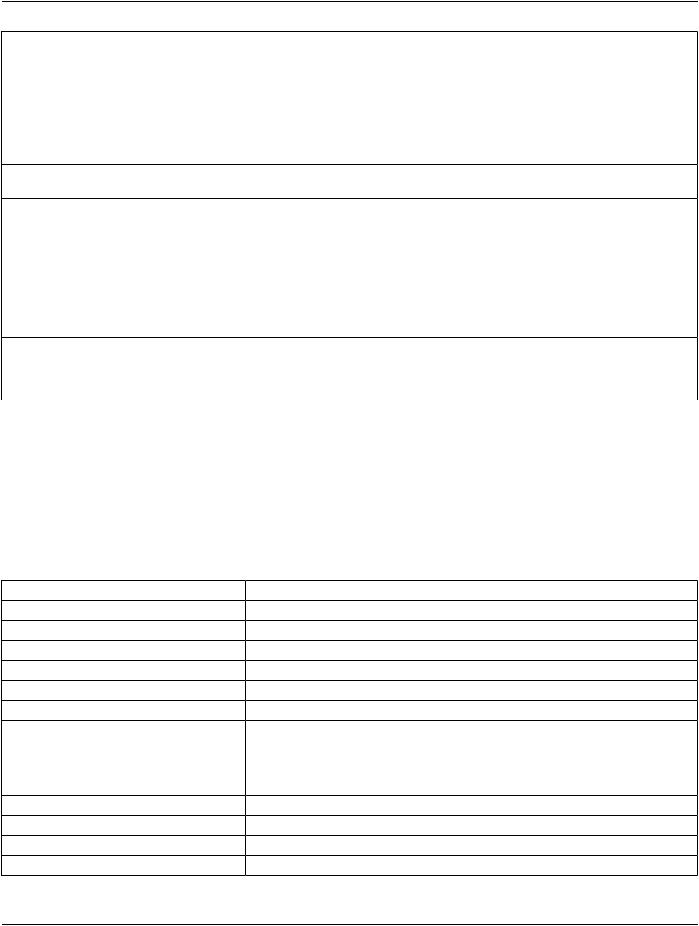
|
DICOM PS3.16 2020a - Content Mapping Resource |
Page 141 |
Rows 7, 8, 9 |
The baseline context group allows for generic intensity, size, texture and other feature measurements, |
|
|
regardless of the geometry of the ROI (e.g., linear distance can be measured on volumes, or volume can be |
|
|
estimatedfromalineardistance),andbeingbaseline,donotconstraintheinvokerfromusingotherappropriate |
|
|
concepts specific to the application. |
|
|
Different measurements of the same real world lesion made using different types of measurements (different |
|
|
templates) can be correlated by a shared value of Tracking Unique Identifer. See also Section RRR.5 |
|
|
“Measurement Report SR Document Volumetric ROI with RECIST Linear Distance Specified by Coordinates |
|
|
on CT Example” in PS3.17. |
|
Row 7 |
Planar ROI measurements are those defined on a single plane by a segmentation reference or planar spatial |
|
|
coordinates. |
|
Row 8 |
Volumetric ROI measurements are those defined on a volume by raster or surface segmentation references |
|
|
or a set of 2D or 3D spatial coordinates. |
|
Row 9 |
Generic measurements include those specified on an image as a whole or by unconstrained graphic |
|
|
coordinates. These may be used for such things as whole image scores or quality measures, and for linear |
|
|
distance meaurements, such as for RECIST or WHO tumor treatment response criteria evaluation. |
|
A Measurement Group is used to contain one or more individual measurements that are invocations of TID 300, consistent with TIDs 1410 and 1411, which both already have Measurement Group containers as their roots.
Rows 12, 13, 13b, 14These Content Items allow encoding a flat list of name-value pairs that are coded questions with coded or text answers, for example, to record categorical observations related to the entire subject of the report rather thanspecificmeasurementgroups.Asinglelevelofcodedmodifiersmaybepresent,suchastopost-coordinate the laterality if the parent concept involves an anatomic part.
TID 1501 Measurement and Qualitative Evaluation Group
This Template groups measurements and/or qualitative evaluations into a Measurement Group.
Each Measurement Group is identified by Tracking ID and UIDs, and may be described as having being made at a particular time point.
Measurement groups may contain various common measurement modifiers that are shared by all measurements in the group, such as method and finding site.
|
Table TID 1501. Parameters |
Parameter Name |
Parameter Usage |
$Measurement |
Coded term or Context Group for Concept Name of measurement |
$Units |
Units of Measurement |
$ModType |
Modifier Name for Concept Name of measurement |
$ModValue |
Modifier Value for Concept Name of measurement |
$Method |
Value for Measurement Method |
$Derivation |
Value for Measurement Derivation |
$TargetSite |
Value(s) for Anatomic Location of measurement |
$TargetSiteMod |
Modifier Value for Anatomic Location of measurement |
$Equation |
Coded term or Context Group for the equation or table from which the measurement |
|
was derived or computed |
$ImagePurpose |
Purpose of Reference for an image used as a source of the measurement |
$WavePurpose |
Purpose of Reference for a waveform used as a source of the measurement |
$RefAuthority |
Bibliographic reference or authority for statistical properties of a reference population |
$RangeAuthority |
Bibliographic reference or authority for the normal range of the measurement |
- Standard -
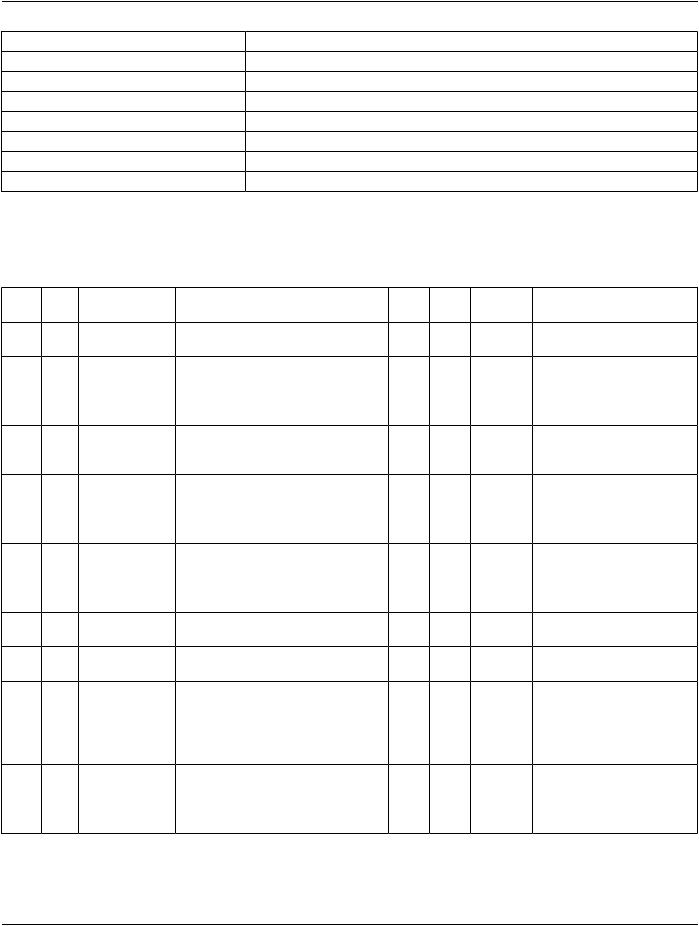
Page 142 |
|
DICOM PS3.16 2020a - Content Mapping Resource |
|
||||
|
|
Parameter Name |
|
Parameter Usage |
|
||
$DerivationParameter |
|
Coded term or Context Group for Concept Name of a derivation parameter |
|||||
$DerivationParameterUnits |
|
Units of derivation parameter |
|
|
|||
$QualType |
|
|
Evaluations encoded with code or text responses |
|
|||
$QualValue |
|
Value of evaluations encoded with code responses |
|
||||
$QualModType |
|
Modifier Name of evaluations encoded with code or text responses |
|||||
$QualModValue |
|
Modifier Value of evaluations encoded with code or text responses |
|||||
$FindingType |
|
Type of the finding |
|
|
|
||
Type: |
|
Extensible |
|
|
|
||
Order: |
|
Non-Significant |
|
|
|
||
Root: |
|
No |
|
|
|
|
|
|
|
Table TID 1501. Measurement and Qualitative Evaluation Group |
|||||
|
NL Rel with Parent VT |
Concept Name |
VM |
ReqCondition Value Set Constraint |
|||
|
|
|
|
|
|
Type |
|
1 |
|
CONTAINS |
CONTAINEREV (125007, DCM, |
1 |
M |
|
|
|
|
|
|
"Measurement Group") |
|
|
|
1b |
> |
HAS OBS |
TEXT |
EV (C67447, NCIt, |
1 |
U |
|
|
|
CONTEXT |
|
"Activity Session") |
|
|
|
2 |
> |
HAS OBS |
TEXT |
DT (112039, DCM, |
1 |
M |
|
|
|
CONTEXT |
|
"Tracking Identifier") |
|
|
|
3 |
> |
HAS OBS |
UIDREF |
EV (112040, DCM, |
1 |
M |
|
|
|
CONTEXT |
|
"Tracking Unique |
|
|
|
|
|
|
|
Identifier") |
|
|
|
3b |
> |
CONTAINS |
CODE |
EV (121071, DCM, |
1 |
U |
$FindingType |
|
|
|
|
"Finding") |
|
|
|
4 |
> |
HAS OBS |
INCLUDE |
DTID 1502 “Time Point |
1 |
U |
|
|
|
CONTEXT |
|
Context” |
|
|
|
5 |
> |
HAS CONCEPTCODE |
EV (370129005, SCT, |
1 |
U |
$Method |
|
|
|
MOD |
|
"Measurement Method") |
|
|
|
6 |
> |
HAS CONCEPTCODE |
EV (363698007, SCT, |
1-n |
U |
$TargetSite |
|
|
|
MOD |
|
"Finding Site") |
|
|
|
7 |
>> |
HAS CONCEPTCODE |
EV (272741003, SCT, |
1 |
U |
DCID 244 “Laterality” |
|
|
|
MOD |
|
"Laterality") |
|
|
|
8 |
>> |
HAS CONCEPTCODE |
DT (106233006, SCT, |
1 |
U |
$TargetSiteMod |
|
|
|
MOD |
|
"Topographicalmodifier") |
|
|
|
9 |
> |
CONTAINS |
COMPOSITEEV(126100,DCM,"Real 1 |
U |
SOP Class UID shall be Real |
||
|
|
|
|
World Value Map used |
|
|
World Value Mapping Storage |
|
|
|
|
for measurement") |
|
|
("1.2.840.10008.5.1.4.1.1.67") |
9b |
|
HAS CONCEPTINCLUDE |
DTID 4019 “Algorithm |
1 |
U |
|
|
|
|
MOD |
|
Identification” |
|
|
|
9c |
> |
CONTAINS |
IMAGE |
EV (121200, DCM, |
1 |
U |
|
|
|
|
|
"Illustration of ROI") |
|
|
|
9d |
> |
CONTAINS |
IMAGE |
EV (130401, DCM, |
1-n |
U |
|
|
|
|
|
"Visual explanation") |
|
|
|
- Standard -
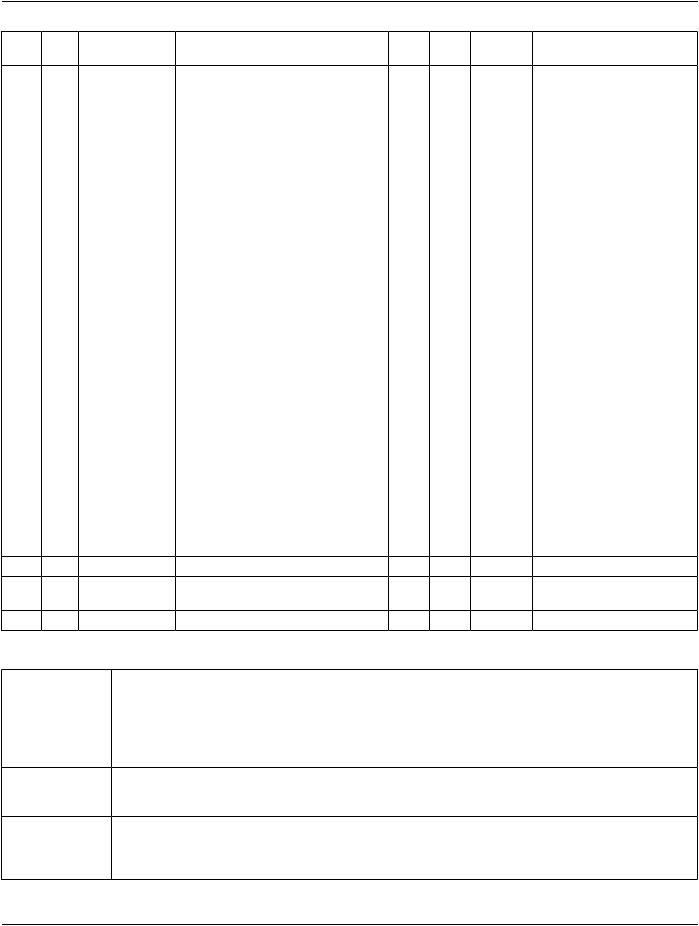
|
|
|
DICOM PS3.16 2020a - Content Mapping Resource |
Page 143 |
|||
|
NL Rel with Parent VT |
Concept Name |
VM |
ReqCondition Value Set Constraint |
|||
|
|
|
|
|
|
Type |
|
10 |
> |
CONTAINS |
INCLUDE |
DTID300“Measurement”1-n |
U |
$Measurement = |
|
|
|
|
|
|
|
|
$Measurement |
|
|
|
|
|
|
|
$Units = $Units |
|
|
|
|
|
|
|
$ModType = $ModType |
|
|
|
|
|
|
|
$ModValue = $ModValue |
|
|
|
|
|
|
|
$Method = $Method |
|
|
|
|
|
|
|
$Derivation = $Derivation |
|
|
|
|
|
|
|
$TargetSite = $TargetSite |
|
|
|
|
|
|
|
$TargetSiteMod = |
|
|
|
|
|
|
|
$TargetSiteMod |
|
|
|
|
|
|
|
$Equation = $Equation |
|
|
|
|
|
|
|
$ImagePurpose = |
|
|
|
|
|
|
|
$ImagePurpose |
|
|
|
|
|
|
|
$WavePurpose = |
|
|
|
|
|
|
|
$WavePurpose |
|
|
|
|
|
|
|
$RefAuthority = $RefAuthority |
|
|
|
|
|
|
|
$RangeAuthority = |
|
|
|
|
|
|
|
$RangeAuthority |
|
|
|
|
|
|
|
$DerivationParameter = |
|
|
|
|
|
|
|
$DerivationParameter |
|
|
|
|
|
|
|
$DerivationParameterUnits = |
|
|
|
|
|
|
|
$DerivationParameterUnits |
11 |
> |
CONTAINS |
CODE |
$QualType |
1-n |
U |
|
11b >> |
HAS CONCEPTCODE |
$QualModType |
1-n |
U |
$QualModValue |
||
|
|
MOD |
|
|
|
|
|
12 |
> |
CONTAINS |
TEXT |
$QualType |
1-n |
U |
|
Content Item Descriptions |
|
|
|
|
|
||
Row 1b |
Identifiesthesessionduringwhichthemeasurementsweremade.TheNCIThesaurusdefinitionis"time,period, |
||||||
|
|
or term devoted to some activity". |
|
|
|
||
Rows 2, 3, 10 |
The included TID 300 already contains an optional inclusion of TID 1408 Tracking Identifier, which in turns |
|
allows for either or both Tracking Identifier and Tracking Unique Identifier Content Items; the intent of Rows 2 |
|
and 3 is not to send these Content Items twice, but rather to specialize their use such that their presence is |
|
mandatory, consistent with TIDs 1410 and 1411. |
Row 3b |
Thetypeofthefindingdescribeswhateverentity(findingorfeature)isidentifiedbyRows2and3.E.g.,afinding |
|
might be a lesion, a tumor, or a reference region (as distinct from its anatomical location, which is encoded in |
|
a different content item (Finding Site). |
Row 6 |
Finding site may be multiple when a region of interest spans multiple anatomical locations and there is not a |
|
single pre-coordinated code describing the combination of locations. E.g., when a maligant, inflammatory or |
|
traumatic process spans actual or defined anatomical boundaries. There is no requirement that the multiple |
|
locations be contiguous. |
- Standard -
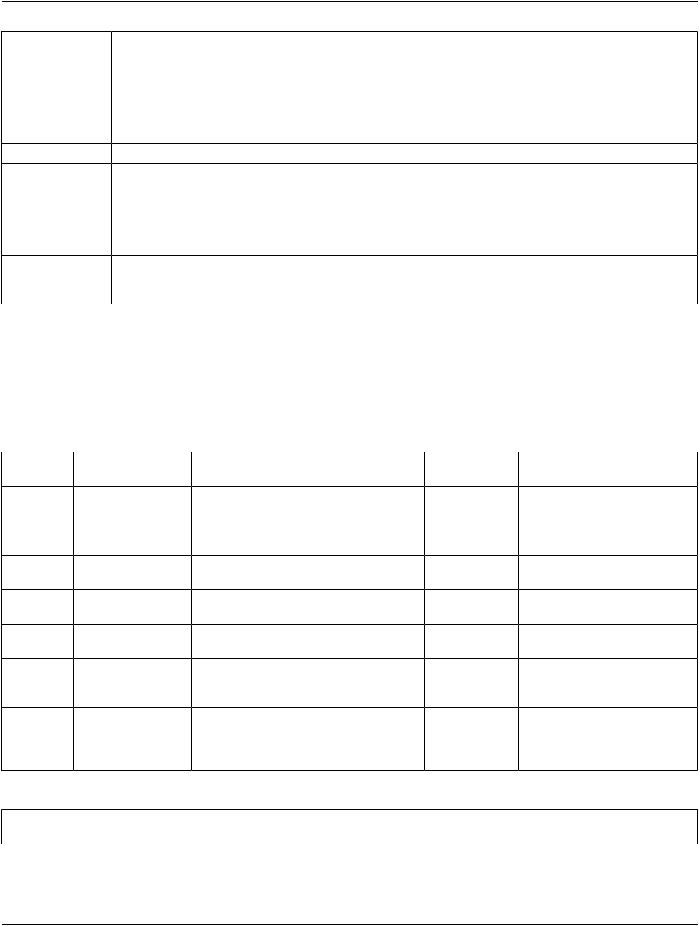
Page 144 |
DICOM PS3.16 2020a - Content Mapping Resource |
Row 9 |
The reference to an RWV in Row 9 allows measurements to be made in units that differ from the stored pixel |
|
valuesintheimagesreferencedelsewhereintheTemplate.E.g.,foraPETSUVbwmeasurement,themapping |
|
from activity/concentration units in the referenced image that was used (and which may be reused for |
|
measurements in the future) may be encoded in a referenced RWV instance. This reference applies to any |
|
measurements in included Templates, unless overridden). |
Row 9b |
Describes the algorithm that applies to all measurements in TID 300 Row 1, unless overridden within the |
|
individual measurement at TID 300 Row 19. |
Row 9c |
This referenced image may contain a "screen shot" illustrating a rendered version of the ROI. |
Row 9d |
This referenced image may contain a visual explanation of how an algorithm produces its results, and may be |
|
a"screenshot"oftheexplanationalreadysuperimposedonthesourceimage(e.g.,a"heatmap"),oraparametric |
|
map intended to be superimposed on the source image by the receiving application. The type of image and the |
|
type of visual explanation is described in the referenced image's own metadata. More than one referenced |
|
image may be present, if there is more than one type of visual explanation, or it needs to span more than one |
|
single-frame image. |
Rows 11, 11b, 12 Allowsencodingaflatlistofname-valuepairsthatarecodedquestionswithcodedortextanswers,forexample, to record categorical observations related to the subject of the measurement group. A single level of coded modifiers may be present.
TID 1502 Time Point Context
This Template describes information about the time point, for example, at which a measurement was obtained.
Type: |
Extensible |
Order: |
Non-Significant |
Root: |
No |
Table TID 1502. Time Point Context
|
NL Rel with Parent |
VT |
Concept Name |
VM |
Req ConditionValueSetConstraint |
|
|
|
|
|
|
Type |
|
1 |
HASOBSCONTEXTTEXT |
EV (126070, DCM, "Subject |
1 |
U |
|
|
|
|
|
Time Point Identifier") |
|
|
|
2 |
HASOBSCONTEXTTEXT |
EV (126071, DCM, "Protocol |
1 |
U |
|
|
|
|
|
Time Point Identifier") |
|
|
|
3 |
HASOBSCONTEXTTEXT |
EV (C2348792, UMLS, "Time |
1 |
M |
|
|
|
|
|
Point") |
|
|
|
4 |
HASOBSCONTEXTCODE |
EV (126072, DCM, "Time Point 1-n |
U |
BCID 6146 “Time |
||
|
|
|
Type") |
|
|
Point Types” |
5 |
HASOBSCONTEXTNUM |
EV (126073, DCM, "Time Point |
1 |
U |
UNITS = EV (1, |
|
|
|
|
Order") |
|
|
UCUM, "no units") |
6 |
HASOBSCONTEXTNUM |
EV (128740, DCM, |
1 |
U |
UNITS = DT (d, |
|
|
|
|
"Longitudinal Temporal Offset |
|
|
UCUM, "days") |
|
|
|
from Event") |
|
|
|
7 |
> HAS CONCEPT |
CODE |
EV (128741, DCM, |
1 |
M |
DCID 280 |
|
MOD |
|
"Longitudinal Temporal Event |
|
|
“Longitudinal |
|
|
|
Type") |
|
|
Temporal Event |
|
|
|
|
|
|
Types” |
Content Item Descriptions
Row 1 Usually the same value as the Clinical Trial Time Point ID (0012,0050) attribute in the Clinical Trial Study Module, though not confined to clinical trial use. May or may not be human readable, and not required to be a DICOM UID.
- Standard -
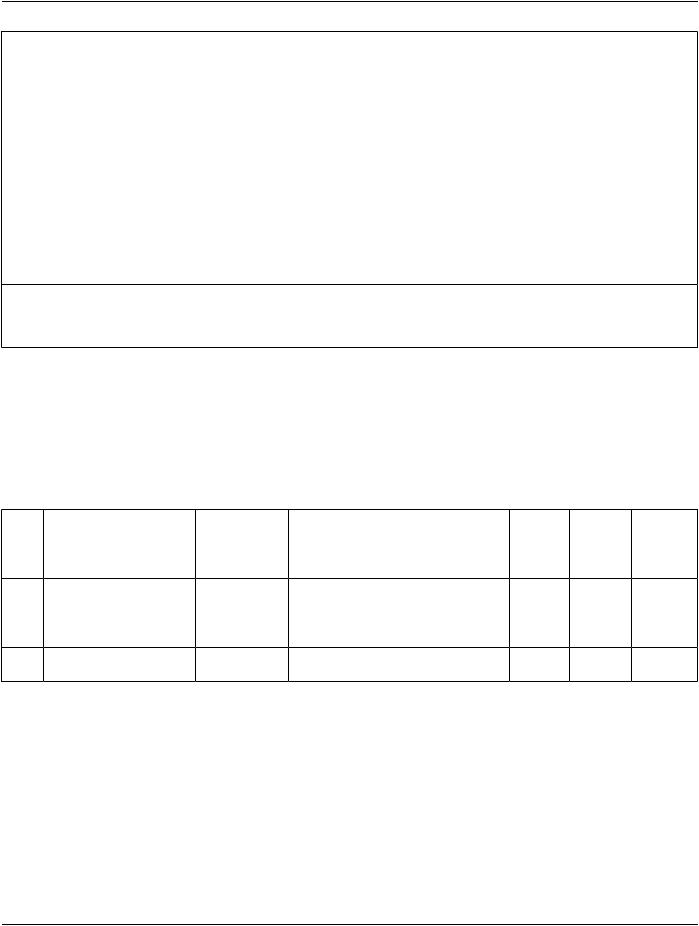
|
DICOM PS3.16 2020a - Content Mapping Resource |
Page 145 |
Row 2 |
Allofthesubjectswithinatreatmentprotocolthatareexaminedataparticularscheduledtimepoint(e.g.,"baseline", |
|
|
"pre-treatment", "first post-treatment") will have the same Protocol Time Point Identifier, but different Subject Time |
|
|
Point Identifiers. However, in different protocols, the Protocol Time Point Identifiers for the same conceptual "time |
|
|
point" will be different. E.g., the "baseline" time point will have different Protocol Time Point Identifiers in different |
|
|
protocols. May or may not be human readable, and not required to be a DICOM UID. |
|
Row 3 |
Typically a short pre-defined label that has the same scope as Protocol Time Point Identifier (i.e., same conceptual |
|
|
time point within a treatment protocol) but is human-readable and understandable, e.g., "BASELINE" or "TP0", |
|
|
"TP1", etc. Usually the same value as Clinical Trial Time Point Description (0012,0051) attribute in the Clinical Trial |
|
|
Study Module, though not confined to clinical trial use. The Concept Name is selected as (C2348792, UMLS, "Time |
|
|
Point") (which is (C68568, NCIt, "Time Point"), defined as "a specific point in the time continuum, including those |
|
|
established relative to an event") in order to be compatible with external terminologies. |
|
Row 4 |
More than one type is permitted, e.g., a time point may be "posttreatment" as well as "unscheduled" or "nadir", etc. |
|
Row 5 |
The order is expected to be monotonically increasing within a particular scope of usage, but is not required to start |
|
|
at 0 or 1, nor required to increase in increments of 1 or even the same increment (e.g., to allow for retrospective |
|
|
insertion of unscheduled time points). In clinical usage, the Time Point Order would be expected to be temporally |
|
|
increasing, but in a clinical trial may be a randomized reading order rather than a temporal order. |
|
Rows 6, 7 |
Longitudinal temporal information may be inherited from Longitudinal Temporal Offset from Event (0012,0052) and |
|
|
Longitudinal Temporal Event Type (0012,0053) in the PS3.3 Section C.7.2.3 Clinical Trial Study Module, or may |
|
be specified or overridden within this template (e.g., if different measurements in the same SR Instance were measured on different time points).
TID 1600 Image Library
The Image Library contains references to images and selected attributes describing them that facilitate analysis without having to retrieve the entire set of referenced images.
Type: |
Extensible |
Order: |
Non-Significant |
Root: |
No |
Table TID 1600. Image Library
|
NL |
Rel with Parent |
VT |
Concept Name |
VM |
Req TypeConditionValue Set |
|
|
|
|
|
|
|
|
Constraint |
1 |
|
|
CONTAINER |
EV (111028, DCM, "Image |
1 |
M |
|
|
|
|
|
|
Library") |
|
|
2 |
> |
CONTAINS |
CONTAINER |
EV (126200, DCM, "Image |
1-n |
U |
|
|
|
|
|
|
Library Group") |
|
|
3 |
>> |
HAS ACQ |
INCLUDE |
DTID 1602 “Image Library |
1 |
U |
|
|
|
CONTEXT |
|
|
Entry Descriptors” |
|
|
4 |
>> |
CONTAINS |
INCLUDE |
DTID 1601 “Image Library |
1-n |
U |
|
|
|
|
|
|
Entry” |
|
|
TID 1601 Image Library Entry
Each instance of the Image Library Entry Template contains the Image SOP Class and Instance UIDs, and selected attributes for an image that facilitate analysis without having to retrieve the entire set of referenced images.
Type: |
Extensible |
Order: |
Non-Significant |
Root: |
No |
- Standard -
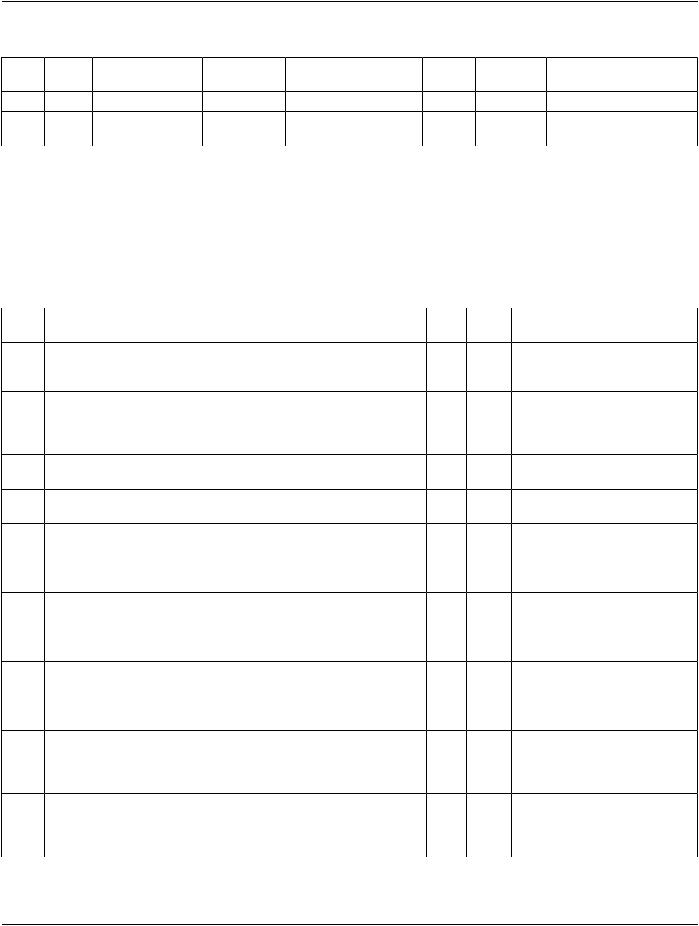
Page 146 DICOM PS3.16 2020a - Content Mapping Resource
Table TID 1601. Image Library Entry
|
NL |
Rel with Parent |
VT |
Concept Name |
VM |
Req TypeCondition Value Set |
|
|
|
|
|
|
Constraint |
1 |
|
|
IMAGE |
|
1 |
M |
2 |
> |
HAS ACQ |
INCLUDE |
DTID 1602 “Image |
1 |
U |
|
|
CONTEXT |
|
LibraryEntryDescriptors” |
|
|
TID 1602 Image Library Entry Descriptors
This Template contains selected attributes for an image or group of images. The descriptive information may be copied from images or derived.
Type: |
Extensible |
Order: |
Non-Significant |
Root: |
No |
Table TID 1602. Image Library Entry Descriptors
|
NL Rel with Parent |
VT |
Concept Name |
VM |
Req |
Condition |
Value Set |
|
|
|
|
|
Type |
|
Constraint |
1 |
HASACQCONTEXTCODE |
EV(121139,DCM,"Modality") |
1 |
U |
|
DCID 29 |
|
|
|
|
|
|
|
|
“Acquisition |
|
|
|
|
|
|
|
Modality” |
2 |
HASACQCONTEXTCODE |
EV (123014, DCM, "Target |
1 |
U |
|
DCID 4031 |
|
|
|
|
Region") |
|
|
|
“Common |
|
|
|
|
|
|
|
Anatomic |
|
|
|
|
|
|
|
Regions” |
3 |
HASACQCONTEXTCODE |
EV (111027, DCM, "Image |
1 |
U |
|
DCID 244 |
|
|
|
|
Laterality") |
|
|
|
“Laterality” |
4 |
HASACQCONTEXTDATE |
EV (111060, DCM, "Study |
1 |
U |
|
|
|
|
|
|
Date") |
|
|
|
|
5 |
HASACQCONTEXTTIME |
EV (111061, DCM, "Study |
1 |
U |
|
|
|
|
|
|
Time") |
|
|
|
|
6 |
HASACQCONTEXTDATE |
EV (111018, DCM, "Content |
1 |
U |
|
|
|
|
|
|
Date") |
|
|
|
|
7 |
HASACQCONTEXTTIME |
EV (111019, DCM, "Content |
1 |
U |
|
|
|
|
|
|
Time") |
|
|
|
|
8 |
HASACQCONTEXTDATE |
EV(126201,DCM,"Acquisition 1 |
U |
|
|
||
|
|
|
Date") |
|
|
|
|
9 |
HASACQCONTEXTTIME |
EV(126202,DCM,"Acquisition 1 |
U |
|
|
||
|
|
|
Time") |
|
|
|
|
10 |
HASACQCONTEXTUIDREF |
EV (112227, DCM, "Frame of |
1 |
U |
|
|
|
|
|
|
Reference UID") |
|
|
|
|
11 |
HASACQCONTEXTNUM |
EV(110910,DCM,"PixelData 1 |
U |
|
UNITS = EV |
||
|
|
|
Rows") |
|
|
|
({pixels}, |
|
|
|
|
|
|
|
UCUM, |
|
|
|
|
|
|
|
"pixels") |
12 |
HASACQCONTEXTNUM |
EV(110911,DCM,"PixelData 1 |
U |
|
UNITS = EV |
||
|
|
|
Columns") |
|
|
|
({pixels}, |
|
|
|
|
|
|
|
UCUM, |
|
|
|
|
|
|
|
"pixels") |
- Standard -
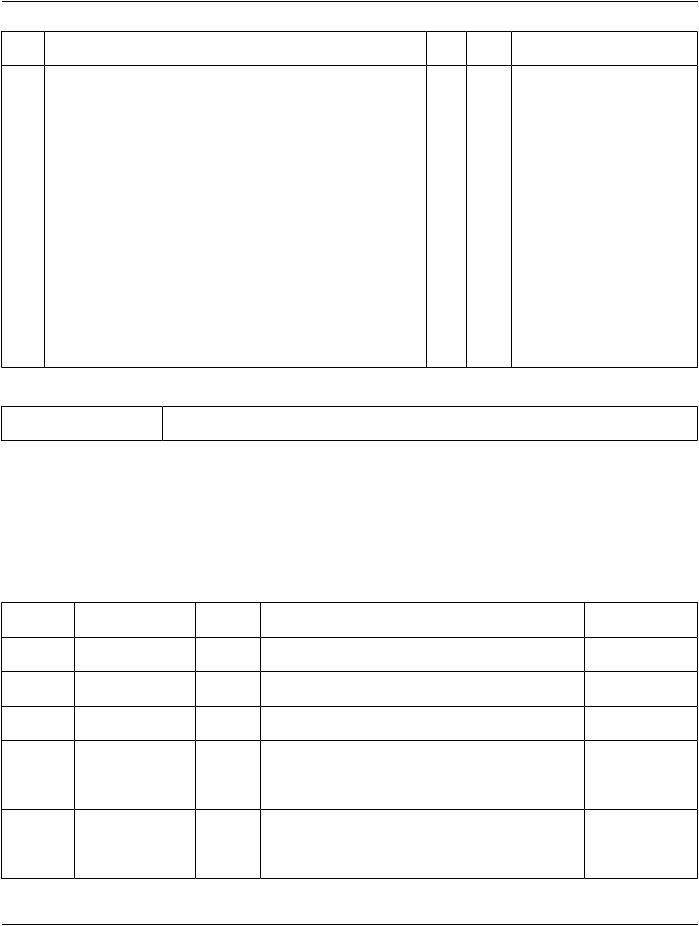
|
|
|
DICOM PS3.16 2020a - Content Mapping Resource |
|
Page 147 |
|||
|
NL Rel with Parent |
VT |
Concept Name |
VM |
Req |
Condition |
Value Set |
|
|
|
|
|
|
|
Type |
|
Constraint |
13 |
HASACQCONTEXTINCLUDE DTID 1603 “Image Library |
1 |
C |
IFF Row 1 is |
|
|||
|
|
|
|
EntryDescriptorsforProjection |
|
|
present with a |
|
|
|
|
|
Radiography” |
|
|
value of "CR", |
|
|
|
|
|
|
|
|
"DX", "IO", "MG, |
|
|
|
|
|
|
|
|
"PX", "RF", "RG" |
|
|
|
|
|
|
|
|
or "XA" |
|
14 |
HASACQCONTEXTINCLUDE DTID 1604 “Image Library |
1 |
C |
IFF Row 1 is |
|
|||
|
|
|
|
Entry Descriptors for |
|
|
present with a |
|
|
|
|
|
Cross-Sectional Modalities” |
|
|
value of "CT", |
|
|
|
|
|
|
|
|
"MR" or "PT" |
|
15 |
HASACQCONTEXTINCLUDE DTID 1605 “Image Library |
1 |
C |
IFF Row 1 is |
|
|||
|
|
|
|
Entry Descriptors for CT” |
|
|
present with a |
|
|
|
|
|
|
|
|
value of "CT" |
|
16 |
HASACQCONTEXTINCLUDE DTID 1606 “Image Library |
1 |
C |
IFF Row 1 is |
|
|||
|
|
|
|
Entry Descriptors for MR” |
|
|
present with a |
|
|
|
|
|
|
|
|
value of "MR" |
|
17 |
HASACQCONTEXTINCLUDE DTID 1607 “Image Library |
1 |
C |
IFF Row 1 is |
|
|||
|
|
|
|
Entry Descriptors for PET” |
|
|
present with a |
|
|
|
|
|
|
|
|
value of "PT" |
|
Content Item Descriptions |
|
|
|
|
|
|
|
|
Target Region |
The value of Anatomic Region Sequence (0008,2218) in the Image IOD, or a code derived from Body |
|||||||
|
|
Part Examined (0018,0015) using the mapping described in Annex L. |
|
|||||
TID 1603 Image Library Entry Descriptors for Projection Radiography
This Template contains selected attributes for a projection radiography image or group of such images. The descriptive information may be copied from images or derived.
Type: |
Extensible |
Order: |
Non-Significant |
Root: |
No |
Table TID 1603. Image Library Entry Descriptors for Projection Radiography
|
NL Rel with Parent |
VT |
Concept Name |
VM |
Req Condition Value Set |
|
|
|
|
|
|
Type |
Constraint |
1 |
HAS ACQ CONTEXTCODE |
EV (111031, DCM, "Image |
1 |
U |
|
|
|
|
|
View") |
|
|
|
2 |
> HASCONCEPTMODCODE |
EV (111032, DCM, "Image |
1-n |
U |
|
|
|
|
|
View Modifier") |
|
|
|
3 |
HAS ACQ CONTEXTTEXT |
EV (111044, DCM, "Patient |
1 |
U |
|
|
|
|
|
Orientation Row") |
|
|
|
4 |
HAS ACQ CONTEXTTEXT |
EV (111043, DCM, "Patient |
1 |
U |
|
|
|
|
|
Orientation Column") |
|
|
|
5 |
HAS ACQ CONTEXTNUM |
EV (111026, DCM, "Horizontal |
1 |
U |
UNITS = EV (mm, |
|
|
|
|
Pixel Spacing") |
|
|
UCUM, "millimeter") |
6 |
HAS ACQ CONTEXTNUM |
EV (111066, DCM, "Vertical |
1 |
U |
UNITS = EV (mm, |
|
|
|
|
Pixel Spacing") |
|
|
UCUM, "millimeter") |
7 |
HAS ACQ CONTEXTNUM |
EV (112011, DCM, "Positioner |
1 |
U |
UNITS = EV (deg, |
|
|
|
|
Primary Angle") |
|
|
UCUM, "deg") |
- Standard -
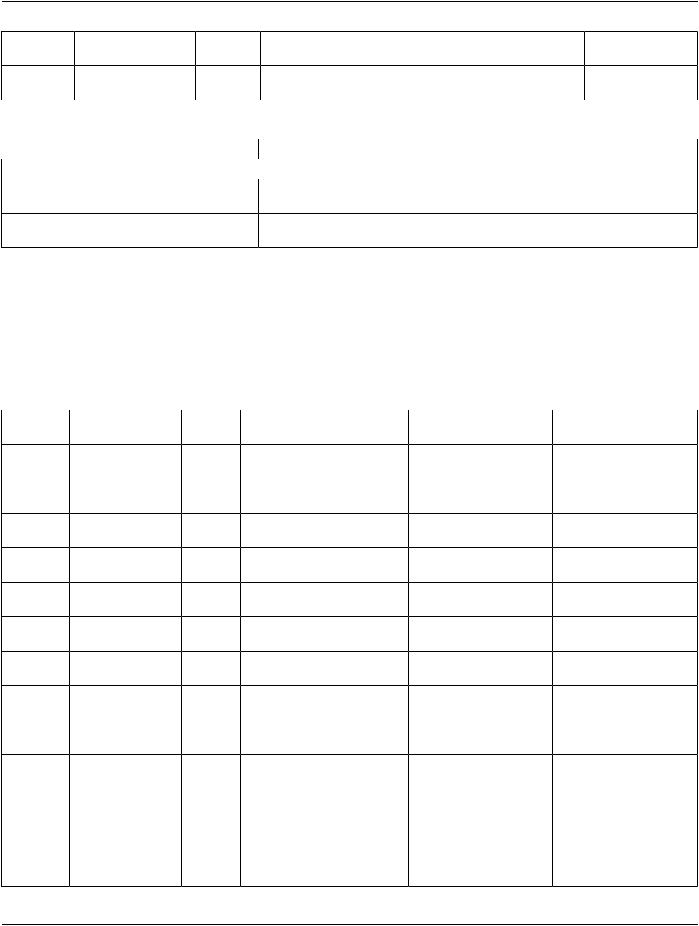
Page 148 |
DICOM PS3.16 2020a - Content Mapping Resource |
|
||||
|
NL Rel with Parent |
VT |
Concept Name |
VM |
Req Condition Value Set |
|
|
|
|
|
|
Type |
Constraint |
8 |
HAS ACQ CONTEXTNUM |
EV (112012, DCM, "Positioner |
1 |
U |
UNITS = EV (deg, |
|
|
|
|
Secondary Angle") |
|
|
UCUM, "deg") |
Content Item Descriptions
 Patient Orientation Row
Patient Orientation Row
Patient Orientation Column
Horizontal Imager Pixel Spacing
Vertical Imager Pixel Spacing
First (row) and second (column) components of Patient Orientation (0020,0020) in  the Image IOD. See Section C.7.6.1.1.1 “Patient Orientation” in PS3.3.
the Image IOD. See Section C.7.6.1.1.1 “Patient Orientation” in PS3.3.
The second component of Imager Pixel Spacing (0018,1164) in the Image IOD. See Section C.8.11.4 “DX Detector Module” in PS3.3.
The first component of Imager Pixel Spacing (0018,1164) in the Image IOD. See Section C.8.11.4 “DX Detector Module” in PS3.3.
TID 1604 Image Library Entry Descriptors for Cross-Sectional Modalities
This Template contains selected attributes for a cross-sectional image or group of such images. The descriptive information may be copied from images or derived.
Type: |
Extensible |
Order: |
Non-Significant |
Root: |
No |
Table TID 1604. Image Library Entry Descriptors for Cross-Sectional Modalities
|
NL Rel with Parent |
VT |
Concept Name |
VM |
ReqCondition Value Set Constraint |
|
|
|
|
|
|
Type |
|
1 |
HAS ACQ |
NUM |
EV (111026, DCM, "Horizontal 1 |
U |
UNITS = EV (mm, UCUM, |
|
|
CONTEXT |
|
Pixel Spacing") |
|
|
"millimeter") |
2 |
HAS ACQ |
NUM |
EV (111066, DCM, "Vertical |
1 |
U |
UNITS = EV (mm, UCUM, |
|
CONTEXT |
|
Pixel Spacing") |
|
|
"millimeter") |
3 |
HAS ACQ |
NUM |
EV (112226, DCM, "Spacing |
1 |
U |
UNITS = EV (mm, UCUM, |
|
CONTEXT |
|
between slices") |
|
|
"millimeter") |
4 |
HAS ACQ |
NUM |
EV (112225, DCM, "Slice |
1 |
U |
UNITS = EV (mm, UCUM, |
|
CONTEXT |
|
Thickness") |
|
|
"millimeter") |
5 |
HAS ACQ |
NUM |
EV (110901, DCM, "Image |
1 |
U |
UNITS = EV (mm, UCUM, |
|
CONTEXT |
|
Position (Patient) X") |
|
|
"millimeter") |
6 |
HAS ACQ |
NUM |
EV (110902, DCM, "Image |
1 |
U |
UNITS = EV (mm, UCUM, |
|
CONTEXT |
|
Position (Patient) Y") |
|
|
"millimeter") |
7 |
HAS ACQ |
NUM |
EV (110903, DCM, "Image |
1 |
U |
UNITS = EV (mm, UCUM, |
|
CONTEXT |
|
Position (Patient) Z") |
|
|
"millimeter") |
8 |
HAS ACQ |
NUM |
EV (110904, DCM, "Image |
1 |
U |
UNITS = EV ({-1:1}, |
|
CONTEXT |
|
Orientation (Patient) Row X") |
|
|
UCUM, "{-1:1}") |
9 |
HAS ACQ |
NUM |
EV (110905, DCM, "Image |
1 |
U |
UNITS = EV ({-1:1}, |
|
CONTEXT |
|
Orientation (Patient) Row Y") |
|
|
UCUM, "{-1:1}") |
10 |
HAS ACQ |
NUM |
EV (110906, DCM, "Image |
1 |
U |
UNITS = EV ({-1:1}, |
|
CONTEXT |
|
Orientation (Patient) Row Z") |
|
|
UCUM, "{-1:1}") |
11 |
HAS ACQ |
NUM |
EV (110907, DCM, "Image |
1 |
U |
UNITS = EV ({-1:1}, |
|
CONTEXT |
|
Orientation (Patient) Column |
|
|
UCUM, "{-1:1}") |
|
|
|
X") |
|
|
|
12 |
HAS ACQ |
NUM |
EV (110908, DCM, "Image |
1 |
U |
UNITS = EV ({-1:1}, |
|
CONTEXT |
|
Orientation (Patient) Column |
|
|
UCUM, "{-1:1}") |
|
|
|
Y") |
|
|
|
- Standard -
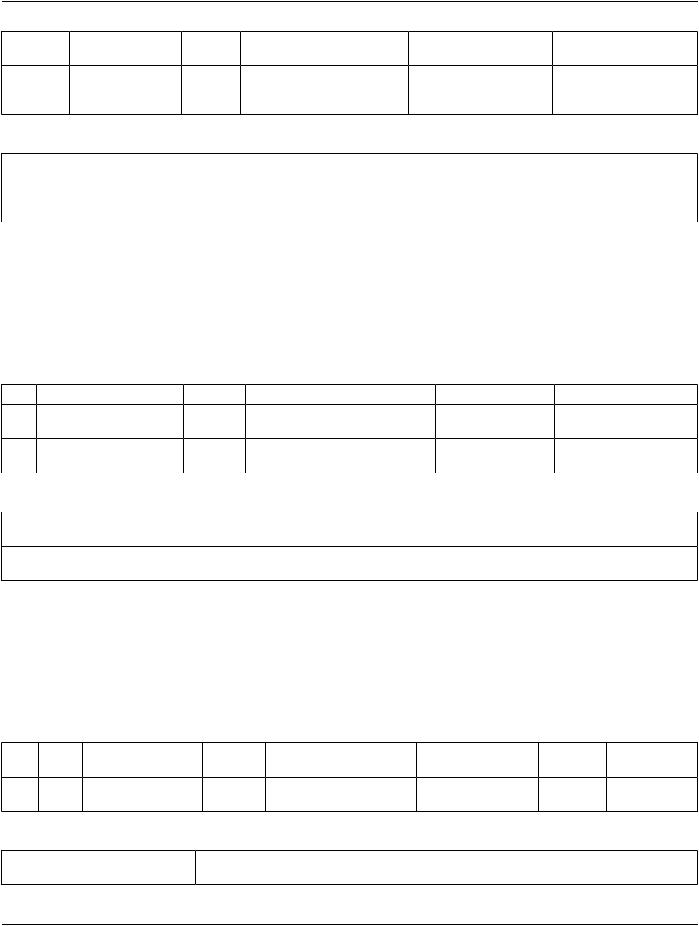
|
|
|
DICOM PS3.16 2020a - Content Mapping Resource |
Page 149 |
|||
|
NL Rel with Parent |
|
VT |
Concept Name |
VM |
ReqCondition Value Set Constraint |
|
|
|
|
|
|
|
Type |
|
13 |
HAS ACQ |
NUM |
EV (110909, DCM, "Image |
1 |
U |
UNITS = EV ({-1:1}, |
|
|
CONTEXT |
|
|
Orientation (Patient) Column |
|
|
UCUM, "{-1:1}") |
|
|
|
|
Z") |
|
|
|
Content Item Descriptions |
|
|
|
|
|
|
|
Horizontal Imager Pixel Spacing |
ThesecondcomponentofPixelSpacing(0028,0030)intheImageIOD.SeeSection10.7.1.1 |
||||||
|
|
|
“Pixel Spacing” in PS3.3 and Section C.7.6.2 “Image Plane Module” in PS3.3. |
||||
Vertical Imager Pixel Spacing |
|
The first component of Pixel Spacing (0028,0030) in the Image IOD. See Section 10.7.1.1 |
|||||
|
|
|
“Pixel Spacing” in PS3.3 and Section C.7.6.2 “Image Plane Module” in PS3.3. |
||||
TID 1605 Image Library Entry Descriptors for CT
This Template contains selected attributes for a CT image or group of such images. The descriptive information may be copied from images or derived.
Type: |
Extensible |
Order: |
Non-Significant |
Root: |
No |
|
Table TID 1605. Image Library Entry Descriptors for CT |
NL |
Rel with Parent |
VT |
Concept Name |
VM ReqTypeCondition Value Set Constraint |
||
1 |
HAS ACQ |
CODE |
EV (113820, DCM, "CT |
1 |
U |
DCID 10013 “CT |
|
CONTEXT |
|
Acquisition Type") |
|
|
Acquisition Type” |
2 |
HAS ACQ |
CODE |
EV (113961, DCM, |
1 |
U |
DCID 10033 “CT |
|
CONTEXT |
|
"ReconstructionAlgorithm") |
|
|
Reconstruction Algorithm” |
Content Item Descriptions |
|
|
|
|
|
|
CT Acquisition Type |
A code derived from the value of Acquisition Type (0018,9302) in the Image IOD. See |
|||||
|
|
Section C.8.15.3.2 “CT Acquisition Type Macro” in PS3.3. |
|
|||
Reconstruction Algorithm |
A code derived from the value of Reconstruction Algorithm (0018,9315) in the Image IOD. See |
|||||
|
|
Section C.8.15.3.7 “CT Reconstruction Macro” in PS3.3. |
|
|||
TID 1606 Image Library Entry Descriptors for MR
This Template contains selected attributes for a MR image or group of such images. The descriptive information may be copied from images or derived.
Type: |
Extensible |
Order: |
Non-Significant |
Root: |
No |
|
Table TID 1606. Image Library Entry Descriptors for MR |
NL |
Rel with Parent |
VT |
Concept Name |
VM |
Req Type Condition Value Set |
|
|
|
|
|
Constraint |
1 |
HAS ACQ CONTEXTTEXT |
EV (128230, DCM, "Pulse |
1 |
U |
|
|
|
|
Sequence Name") |
|
|
Content Item Descriptions |
|
|
|
|
|
Pulse Sequence Name |
The value of Pulse Sequence Name (0018,9005) or Sequence Name (0018,0024) in the Image |
||||
|
|
IOD. See Section C.8.13.4 “MR Pulse Sequence Module” in PS3.3. |
|||
- Standard -
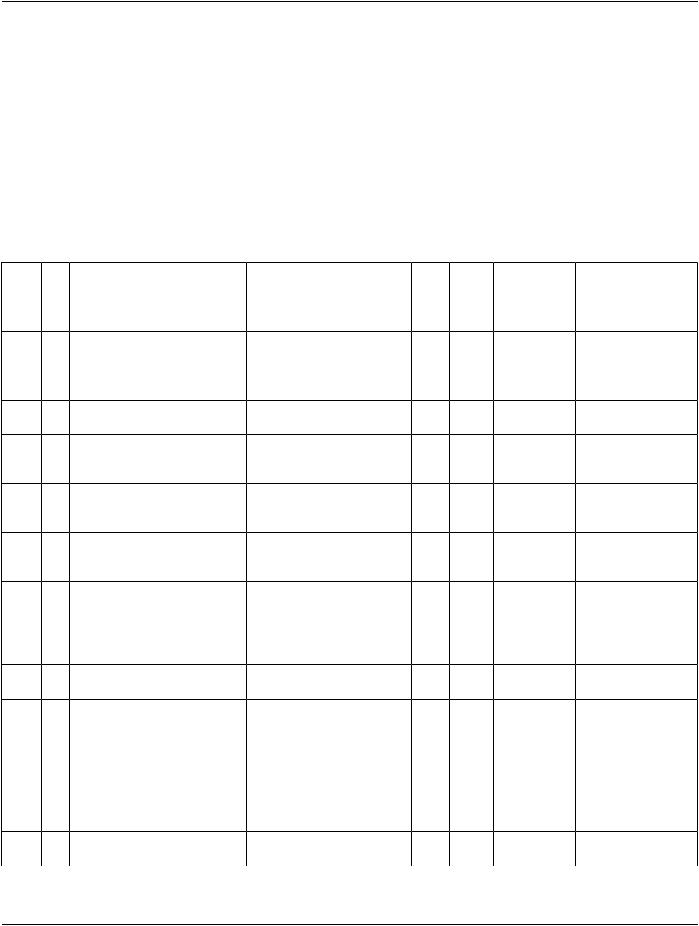
Page 150 |
DICOM PS3.16 2020a - Content Mapping Resource |
TID 1607 Image Library Entry Descriptors for PET
This Template contains selected attributes for a PET image or group of such images. The descriptive information may be copied from images or derived.
Note
The content of this Template is similar to that in TID 15101 NM/PET Protocol Context, but is in the form of an SR Template rather than a Protocol Context Template, and the content items are not nested as modifiers. There is also some similarity to TID 3307 NM/PET Perfusion Measurement Group.
Type: |
Extensible |
Order: |
Non-Significant |
Root: |
No |
Table TID 1607. Image Library Entry Descriptors for PET
|
NL Rel with Parent |
VT |
Concept Name |
VM |
Req |
Condition Value Set Constraint |
|
|
|
|
|
Type |
|
1 |
HAS ACQ |
CODE |
EV (89457008, SCT, |
1 |
U |
DCID 4020 “PET |
|
CONTEXT |
|
"Radionuclide") |
|
|
Radionuclide” |
2 |
HAS ACQ |
CODE |
EV (349358000, SCT, |
1 |
U |
DCID 4021 “PET |
|
CONTEXT |
|
"Radiopharmaceutical agent") |
|
|
Radiopharmaceutical” |
3 |
HAS ACQ |
NUM |
EV(304283002,SCT,"Half-life 1 |
U |
UNITS = EV (s, |
|
|
CONTEXT |
|
of radiopharmaceutical") |
|
|
UCUM, "s") |
3b |
HAS ACQ |
TEXT |
EV(121022,DCM,"Accession 1 |
U |
|
|
|
CONTEXT |
|
Number") |
|
|
|
4 |
HAS ACQ |
DATETIMEEV (123003, DCM, |
1 |
U |
|
|
|
CONTEXT |
|
"Radiopharmaceutical Start |
|
|
|
|
|
|
DateTime") |
|
|
|
5 |
HAS ACQ |
DATETIMEEV (123004, DCM, |
1 |
U |
|
|
|
CONTEXT |
|
"Radiopharmaceutical Stop |
|
|
|
|
|
|
DateTime") |
|
|
|
6 |
HAS ACQ |
NUM |
EV (123005, DCM, |
1 |
U |
UNITS = DT (cm3, |
|
CONTEXT |
|
"Radiopharmaceutical |
|
|
UCUM, "cm3") |
|
|
|
Volume") |
|
|
|
7 |
HAS ACQ |
NUM |
EV (123006, DCM, |
1 |
U |
UNITS = DT (Bq, |
|
CONTEXT |
|
"Radionuclide Total Dose") |
|
|
UCUM, "Bq") |
8 |
HAS ACQ |
NUM |
EV (123007, DCM, |
1 |
U |
UNITS = DT (Bq/mol, |
|
CONTEXT |
|
"RadiopharmaceuticalSpecific |
|
|
UCUM, "Bq/mol") |
|
|
|
Activity") |
|
|
|
9 |
HAS ACQ |
CODE |
EV (410675002, SCT, "Route |
1 |
U |
BCID 11 “Route of |
|
CONTEXT |
|
of Administration") |
|
|
Administration” |
10 |
HAS ACQ |
NUM |
EV (123009, DCM, |
1 |
U |
UNITS = DT |
|
CONTEXT |
|
"RadionuclideSyringeCounts") |
|
|
({counts}/s, UCUM |
|
|
|
|
|
|
"counts/s") |
11 |
HAS ACQ |
NUM |
EV (123010, DCM, |
1 |
U |
UNITS = DT |
|
CONTEXT |
|
"Radionuclide Residual |
|
|
({counts}/s, UCUM |
|
|
|
Syringe Counts") |
|
|
"counts/s") |
12 |
HAS ACQ |
NUM |
EV (126203, DCM, "PET |
1 |
U |
UNITS = EV (min, |
|
CONTEXT |
|
RadionuclideIncubationTime") |
|
|
UCUM, "min") |
13 |
HAS ACQ |
NUM |
EV (14749-6, LN, "Glucose") |
1 |
U |
UNITS = EV (mmol/l, |
|
CONTEXT |
|
|
|
|
UCUM, "mmol/l") |
- Standard -
